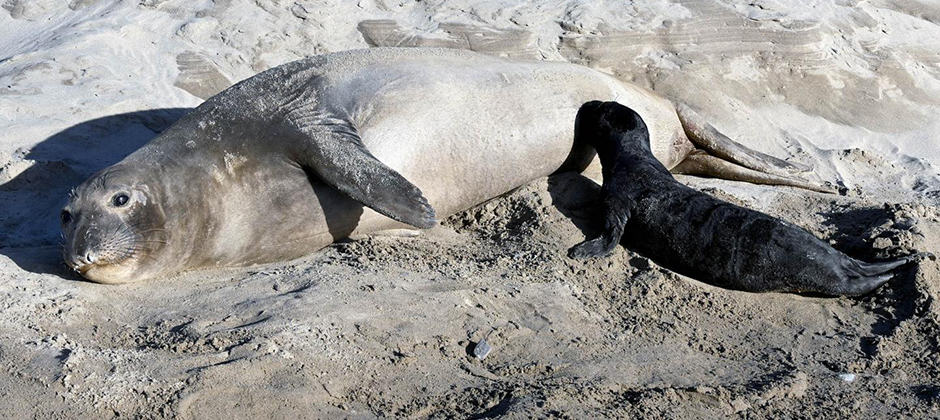Share this article
Most of elephant seal population born from ‘supermoms’
Elephant seals have had a spectacular journey from the brink of extinction, and they may owe it to a group of “supermoms” responsible for most of the reproduction.
In a study covering 52 years of northern elephant seal (Mirounga angustirostris) reproduction in a population north of Santa Cruz, California, researchers found just 6% of the females accounted for more than half of the total pup production. These were older females who succeeded in reproducing far more than younger females that vastly outnumbered them.
“It just jumped out at me, because I thought the most numerous females would have the most significant effect in the next generation, because there are just more of them, but that was not the case,” said Burney Le Boeuf, professor emeritus of ecology and evolutionary biology at UC Santa Cruz.
The lead author of the study published in the Canadian Journal of Zoology, Le Boeuf has been studying the elephant seals of the Año Nuevo rookery north of Santa Cruz since 1967.
“We studied males at first because they were more dramatic, the fights were bloody, and the few that won monopolized mating,” he said. But determining paternity is elusive. To understand what drives the population over time, it made more sense to focus on the lifetime reproductive success of females, because maternity can be confirmed with certainty, and females are, after all, the ultimate source of reproduction.
Adding on tagging data gathered by other researchers dating back to 1963, LeBoeuf and his students were able to follow multiple generations of tagged elephant seals. “It helps in a study like that to wait as long as possible before you bring it all together, synthesize it and tell the story,” he said.
What they found surprised them. Looking at 7,735 females, they found only 6% gave birth to 10 or more pups, accounting for 55% of total pup production. Three-quarters died before reaching breeding age and produced no pups. Nearly half of the survivors bred for only a few years before dying, and young females had low success weaning their pups. Fewer than 1%, however, were extremely successful, producing up to 20 pups in their lifetimes.
Many females that bred early, while they were still growing, had a shorter lifespan, lower weaning success and less productivity than females that postponed breeding. The most successful females gave birth annually, lived long lives and weaned larger pups more likely to survive and breed.
“‘Supermoms,’” I call them,” LeBouef said.
How did these “supermoms” become so successful? That is hard to say but part of the answer lies at sea. Most elephant seals die early in life, and they don’t die on land. Sharks and orcas (Orcinus orca) account for some deaths, LeBoeuf said, El Niño events are known to make foraging more difficult, and fishing nets may ensnare and kill some of them. “That’s one of the big research areas of the future — what causes mortality at sea,” he said.
It could be an important question, because although elephant seals are numerous — about 250,000 are in existence today — genetic diversity is limited. By the end of the 19th century, exploitation for their fat had driven them close to extinction. Only a handful survived on Isla Guadalupe, off the coast of the Baja Peninsula.
“I did some work with geneticists and we calculated that were there fewer than 30 females in the entire population at that time, and only in this one place,” LeBoeuf said.
They lost genetic variability from going through population bottlenecks, he said, but their numbers have grown dramatically and they have reestablished their former range.
“From a conservation point of view, it’s an incredible success story,” he said, and their recovery is due, in part, to the productivity of a small percentage of supermoms.
Header Image: A female elephant seal nurses her week-old pup on the beach at Año Nuevo. ©Dan Costa








